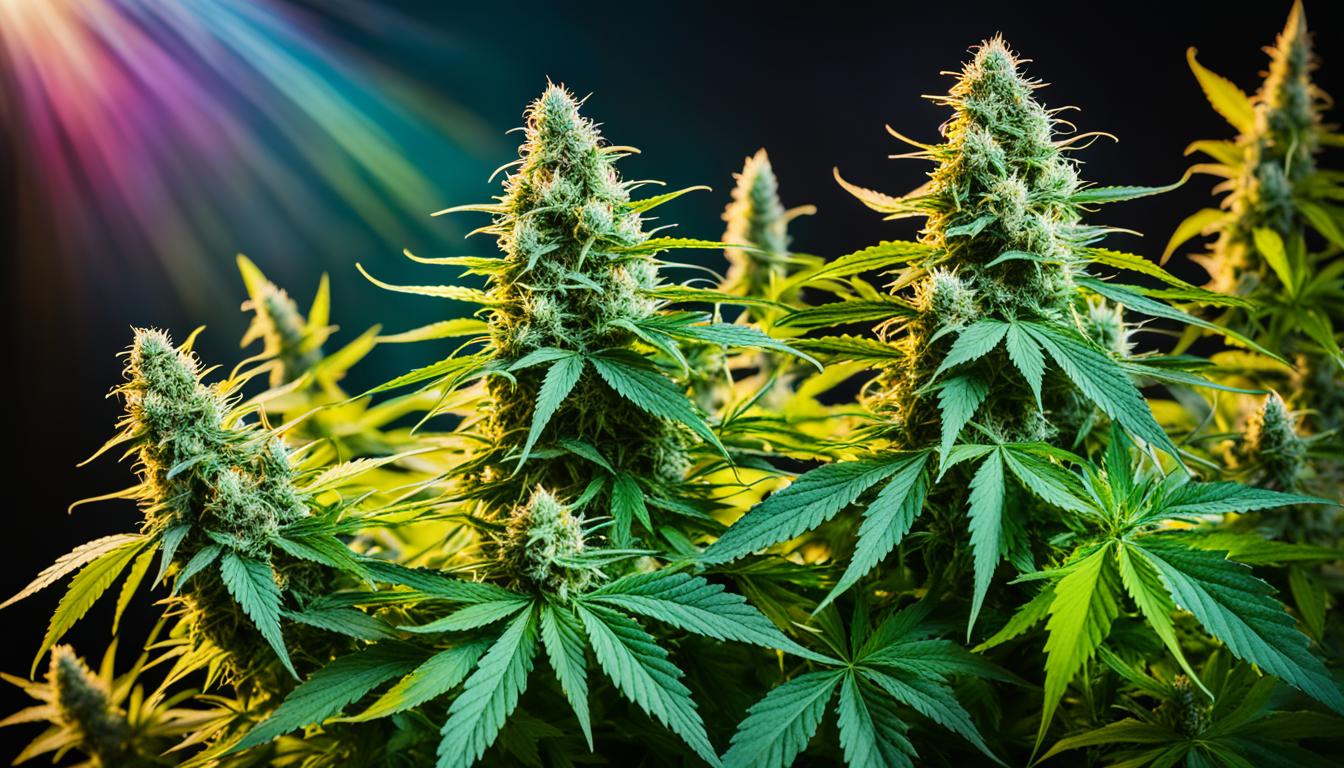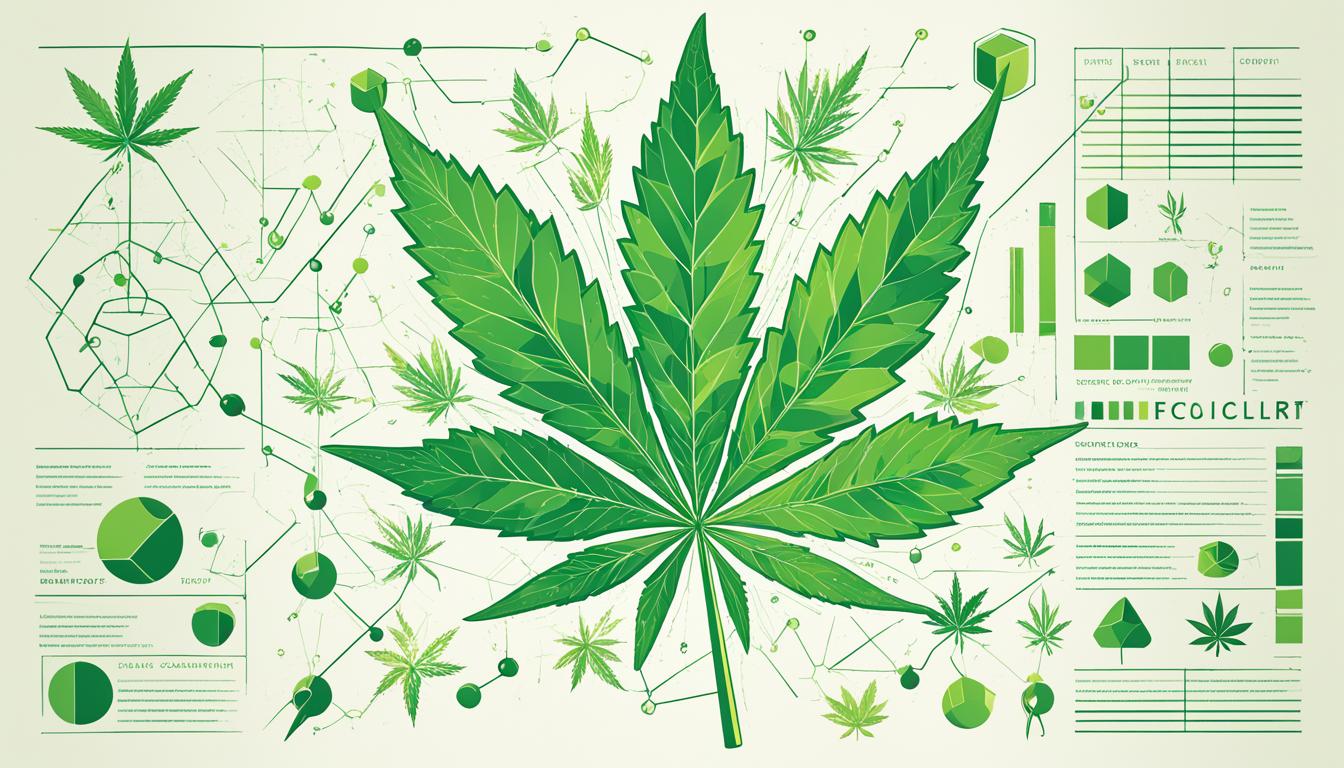
Key Takeaways
- Cannabis is a versatile plant with a wide range of uses in medicine, agriculture, food, and cosmetics.
- The plant contains a variety of chemical compounds, including cannabinoids and terpenes, which have shown potential therapeutic benefits.
- The legal status of cannabis worldwide has hindered extensive research and development of its commercial applications.
- This article will provide a comprehensive overview of the plant, covering its ecology, chemical composition, pharmacology, traditional uses, and industrial applications. This article will provide a comprehensive overview of the plant, covering its ecology, chemical composition, pharmacology, traditional uses, and industrial applications.
- Further research is necessary to fully explore the potential of this remarkable plant.
Introduction to Cannabis
Cannabis sativa likely started in Asia's temperate areas. These could be the southern Caspian region, Siberia, China, or the Himalayas. Over the last 6,000 years, it has changed a lot due to human transport and cultivation. This makes it hard to pinpoint its exact start cannabis origins.
History and Origins
The history of cannabis dates back thousands of years. People have used it since about 60,000 years ago. It's known by many names like "hemp" and "weed." This plant has been a key part of cultures worldwide for a very long time.
Botanical Classification
Scientists have split cannabis into different groups based on looks and chemical makeup. They look at traits like fruit shape and THC level. There are four main types: sativa var. sativa, sativa var. spontanea, indica var. indica, and indica var. kafiristanica.
Common Names and Varieties
Cannabis has many names and comes in lots of varieties. Each variety has its own unique features and qualities.
https://www.youtube.com/watch?v=5eaNWsFfqyE
Chemical Composition and Pharmacology
The Cannabis sativa plant has over 566 chemical substances. There are 125 cannabinoids and 198 non-cannabinoids. Cannabinoids are the active parts, mostly in the flowers. They're also in the leaves, stems, and seeds, just less.
Cannabinoids
Cannabinoids are well-studied for their health benefits. For example, delta-9-tetrahydrocannabinol (THC) and cannabidiol (CBD). They affect our endocannabinoid system, managing things like pain, mood, and hunger.
Terpenes
Terpenes are key for the plant's smell and taste. New studies say they might help fight inflammation, bacteria, and act as antioxidants.
Pharmacological Properties
The many compounds in Cannabis show promise in many areas. This includes fighting diseases and improving health. They're also used in beauty and food. This shows how useful the Cannabis sativa plant can be.

Traditional and Medicinal Uses
Cannabis has been part of human history for a long time, offering many uses, especially in medicine. We have known about its value for around 60,000 years. A 5,000-year-old Sumerian clay tablet mentions medicinal plants use.
The cannabis plant is known for its many traditional and medicinal qualities. This shows just how varied and helpful it can be.
Historical Medicinal Applications
The parts of the cannabis plant, like the flower and leaves, have special properties. They can fight cancer cells, harmful microbes, and reduce high blood pressure. These parts also help boost your appetite and lower fever.
For thousands of years, the plant's extracts have treated issues like glaucoma and depression. It has also helped in the fight against liver and heart diseases. The plant's powerful benefits in traditional medicine are clear.
Modern Therapeutic Potential
Lately, people are looking more at what cannabis can do in health care. Its pain-relieving and brain-protecting effects are well-studied. The compounds in cannabis, such as cannabinoids, are proving to be very helpful.
Cannabis is getting lots of attention for managing chronic pain and easing epilepsy. It also helps with some brain conditions. As scientists learn more, we expect to see even more uses for cannabis in the future.
Industrial and Commercial Uses
The Cannabis plant is very versatile. It is not just for medicine or tradition. As a crop, known as hemp, it's a key material. Its fibre is needed in making many things in the textile industry. The seeds make edible oils, and the leaves season foods.
Fibre and Textile Industry
Hemp fibre is known for being strong and long-lasting. It can make clothes, ropes, and even buildings. More people want eco-friendly materials, boosting this industry. It is believed to keep growing as we find more uses for it.
Food and Cosmetics
Cannabis is also entering the food and beauty worlds. Its seeds have oil used in cooking, baking, and dietary supplements. In beauty, compounds from cannabis are used in things like anti-aging creams, tapping into their health benefits.
Cannabis Industry and Legalization
Widespread use of Cannabis has been held back by its legal status. It was heavily controlled in the last century. This stopped much research and development in its use. But, as more places make it legal, new products and uses are being found.
Conclusion
The Cannabis plant offers a lot in biology, industry, and medicine. It comes packed with various compounds like cannabinoids and terpenes. These show great healing effects. But, its legal status worldwide makes studying it and using it tough.
To really understand and use Cannabis sativa, we need more studies. As we learn more, we see new chances in medicine and industry. Cannabis could open up big changes, from health to eco-friendly production.
The journey with Cannabis is full of hope and challenges. Dealing with its legal side and pushing the science means big benefits for us all. The future of cannabis is about the power of research and wanting to know more.
FAQ
What is cannabis?
Cannabis is a plant that's very useful in many ways. It's used in medicine, farming, food, and making cosmetics. People have been using it for its benefits for thousands of years.
Where does cannabis originate from?
Cannabis sativa comes from places like the southern Caspian region, Siberia, China, and the Himalayas. It's hard to say exactly where because it has moved around a lot over the past 6,000 years.
What are the main subspecies of cannabis?
There are four main types of cannabis - sativa var. sativa, sativa var. spontanea, indica var. indica, and indica var. kafiristanica. These types differ in looks and the chemicals they contain.
What are the key chemical compounds found in cannabis?
Cannabis sativa has more than 566 different chemicals. 125 of these are cannabinoids and 198 are non-cannabinoids. Cannabinoids are the parts that affect our body and mind. Terpenes make up the biggest group of chemicals in cannabis.
What are the potential medicinal and therapeutic applications of cannabis?
Cannabis seems to work well as an antioxidant, to fight infection, and even against cancer. Its extracts help with many health issues like glaucoma, pain, depression, and heart problems. It's also been used for inflammation and metabolic conditions.
How has cannabis been used throughout history?
People have used cannabis for health reasons for a very long time - since 60,000 years ago! There's even a 5,000-year-old tablet from Sumerians that mentions its use. The plant's parts like the flower, leaves, oil, and trichomes have been found to offer health benefits.
What are the industrial and commercial uses of cannabis?
Hemp, a type of cannabis, is grown for its strong fibre. This fibre is used in making clothes. Cannabis seeds can be pressed to make oil, and its leaves are used in cooking. The plant's compounds are also used in beauty products.
What are the challenges facing the cannabis industry?
The legal status of cannabis is often not clear globally. This has slowed down research and business for the plant. And because it has been illegal in many places, a lot of effort has gone into removing it, stopping more research and business growth.







